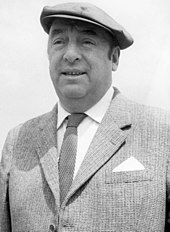Flat cap
This article has multiple issues. Please help improve it or discuss these issues on the talk page. (Learn how and when to remove these template messages)
|

A flat cap is a rounded
History


The style can be traced back to the 16th century in Northern England, when it was more likely to be called a "bonnet". This term was replaced by "cap" before about 1700,[3] except in Scotland, where it continues to be referred to as a bunnet in Scots.[4]
A 1571 Act of the
In the 19th and early 20th centuries, when men predominantly wore some form of headgear, flat caps were commonly worn throughout Great Britain and Ireland. Versions in finer cloth were also considered to be suitable casual countryside wear for upper-class Englishmen. Flat caps were worn by fashionable young men in the 1920s. Boys of all classes in the United Kingdom wore caps during this period; a peaked school cap of prescribed colour and design, of more rounded shape than men's flat caps, was part of the normal school uniform.[6]
The flat cap made its way to southern Italy in the late 1800s, likely brought by British servicemen. In Turkey, the flat cap became the main headgear for men after it became a replacement for the fez, which was banned by Mustafa Kemal Atatürk in 1925.[citation needed]
In the early part of the 20th century it was worn by working class men in Spain and it became part of the traditional attire and folklore of Madrid where it is called parpusa, gorra madrileña, or "Madrid Cap".
British popular culture
In
In
In Peaky Blinders, a BBC television show about a former Birmingham-based gang, characters are seen wearing Baker Boy Caps, a similar style often confused for flat caps. It was thought, and adapted, that the gang had sewed-in razor blades on the peak of their flat caps for use as a weapon to blind their enemies.[11]
Usage in the East End of London is illustrated by Jim Branning of the television soap opera EastEnders and Del Boy Trotter of Only Fools and Horses. Taxicab and bus drivers are often depicted wearing a flat cap, as comedically portrayed by Gareth Hale and Norman Pace's (Hale and Pace) "London cabbies" television sketches.
Current popularity
This article needs additional citations for verification. (January 2021) |


The style has remained popular among groups of people in the United Kingdom, Ireland, and North America. The cap is sometimes associated with older men, significantly in
The English rugby league team Featherstone Rovers supporters' nickname is "the Flat Cappers", because supporters in years gone by attended matches wearing them as did most other teams' supporters.[citation needed]
The black leather flat cap is often combined with a patched-up sport coat or leather jacket and dark clothes (sometimes combined with a bee-striped convict's shirt) in popular culture to depict a burglar, mugger, or robber, occasionally with a domino mask.[citation needed] The comic book character the Goon is based on this archetype of the flat-capped street tough from vintage cartoons and comics.[citation needed]
American golfer Bryson DeChambeau wears a flat cap during his rounds on the PGA Tour in honor of the late Payne Stewart and Ben Hogan. The look has rejuvenated popularity with the style amongst younger golfers. [citation needed]
The
See also
- Ascot cap
- Baseball cap
- British country clothing
- Coppola (cap)
- Newsboy cap
- Skipper cap
References
- ^ 7 Gotta-Have Golf Hats for Tee Time. Retrieved June 10, 2023
- ^ "Factories, Farms and Financial Success - A history of the Flat Cap". Sir Gordon Bennett. Retrieved 2023-03-25.
- ^ "Bonnet". Oxford English Dictionary (Online ed.). Oxford University Press. (Subscription or participating institution membership required.)
- ISBN 0-08-028491-4.
- ^ O'Grady, Sean (27 March 2010). "Minor British Institutions: The flat cap". The Independent. Retrieved 2017-07-24.
- ^ "English school uniform garments: headwear". Historical Boys' Clothing. 9 October 2017.
- ^ Mather, Geoffrey. "Capped for England" BBC Radio 4, 2001.
- ^ Porter, Richard (4 November 2016). "If you want to get ahead, get a flat cap". The Daily Telegraph.
- ISBN 9781139457057
- ISBN 9780061804601
- ^ Griffiths, Eleanor (2019-07-19). "Where does the name Peaky Blinders come from?". RadioTimes. Immediate Media Company Limited. Retrieved 2019-11-17.
The TV series suggests that the gang are called "Peaky Blinders" because they use the razors in their hats to blind their enemies, either by slicing the blade across their victims' eyes or by slashing up their faces so much that they are blinded by blood.
- ^ Photos from 1998 Nagano Olympics Opening Ceremony from Canadian Olympic Committee official website.
- ^ Plante, Chandler (14 July 2021), Team USA's Most Iconic Olympic Outfits Throughout the Years Are Pure Gold, popsugar.co.uk
External links
- Cap fits for new generation". Express & Star, July 2007.
- American boys' flat caps Historical Boys Clothing
- Ivy vs. Newsboy Caps Flat Cap Information Resource
